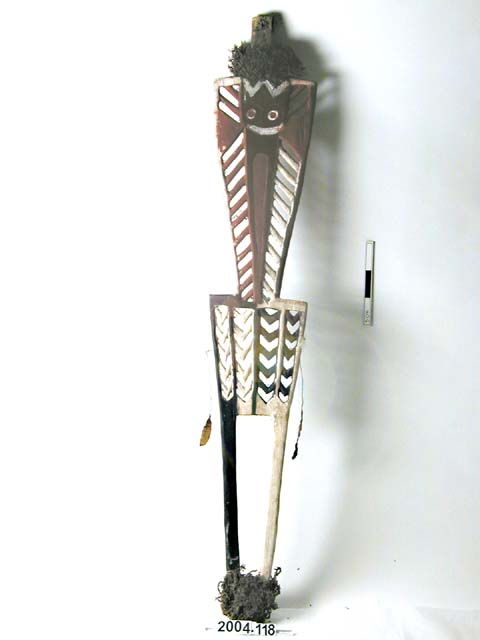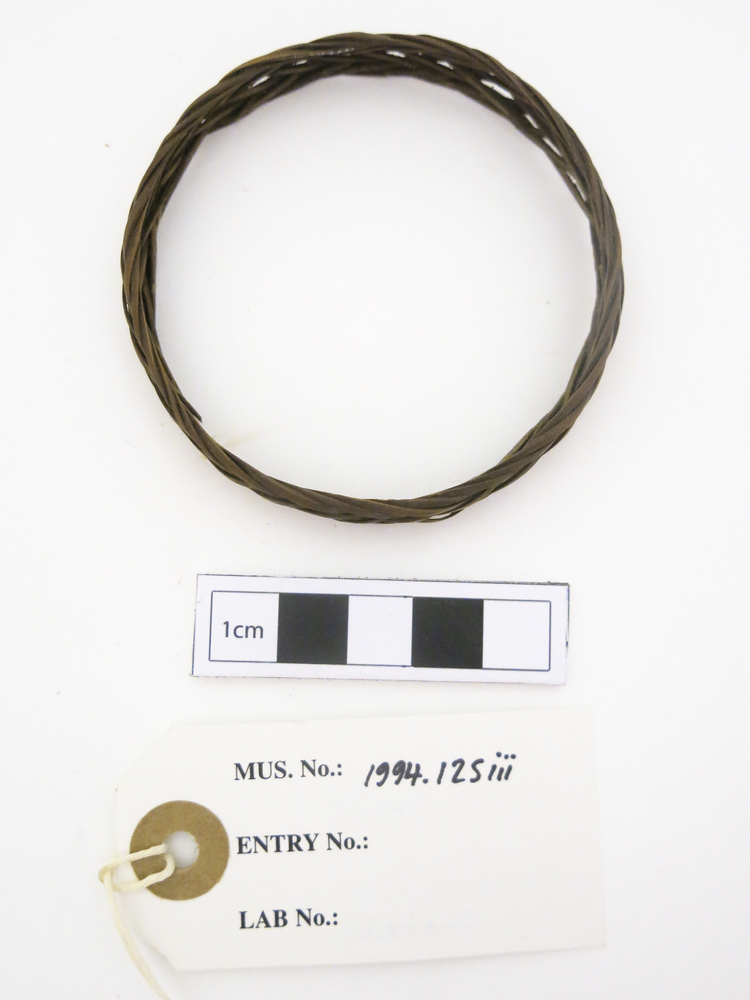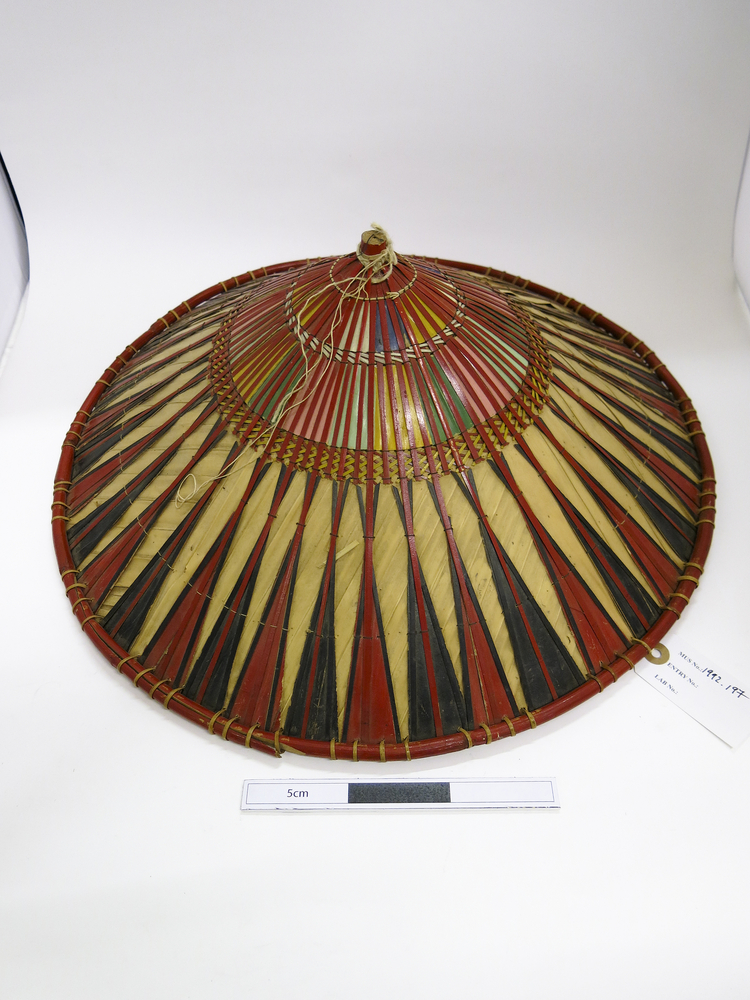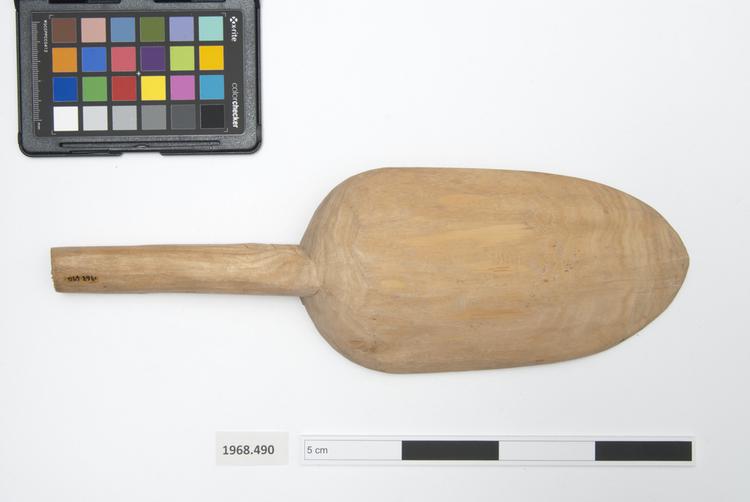
Wooden dance wand constructed of two triangular shapes, filled with wooden bars and coloured with earth tone pigments and a smiling face. Both ends are finished with a plant fibre pom-pom, and a dry leaf and feather have been suspended from each side of the frame.
Dance Wand, Bair, Tolai people, New Britain, Papua New Guinea This delightful character is a bair dance wand carved in the mid-1990s by Emanuel Mulai, a Tolai carver and musical performance specialist (tena buai). Bair come in pairs and are held in the hands by Tolai men while they perform the kulau dance. Although women may perform the kulau without employing bair, men must have them in order to participate. The central figure represents a benevolent playful spirit known as a tabalivana. Like the remarkable skull-like alor masks that the Tolai also make, there are various different kinds of bair dance wand, each slightly different to express the personality and identity of the particular tabalivana spirit it represents. This example is interesting for its strong geometric fretwork and its subtle palette of brown tones. Wood, vegetable fibre, mineral pigment. Late 20th Century. Purchased from the artist by Mr Kevin Conru, and sold by him to the Horniman Museum in 2004.


































































































































































































































































































































































































































































































































